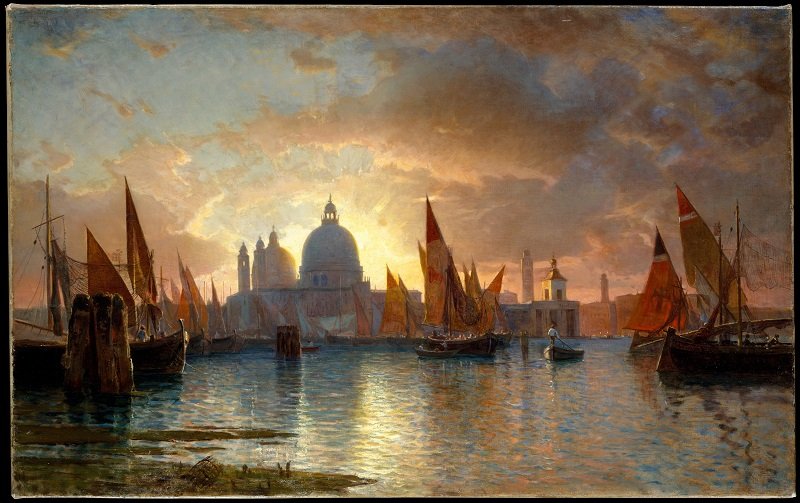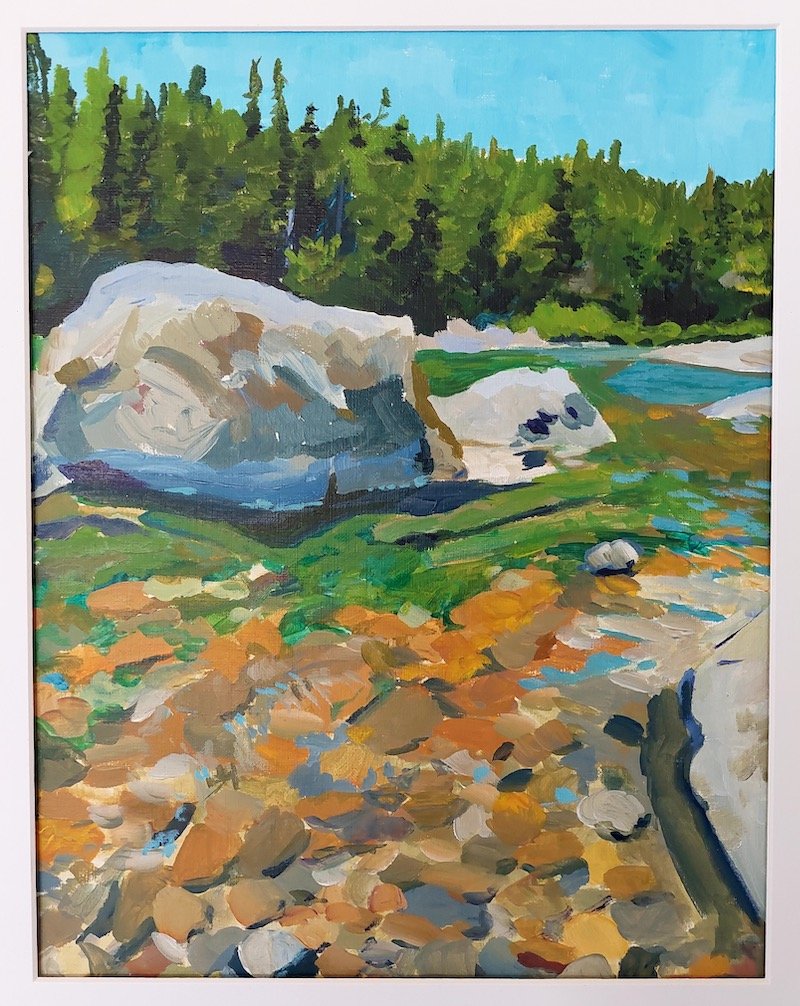Why We Paint Water Reflections
The last three posts have been how to paint various aspects of water reflections. If you missed them, here are the links to them.
From Calm to Choppy: How Water Reflections Act to Surface Changes
Water Reflections: Angles and Sizes
Now let’s take a step back. Why is it important to learn how to paint the reflections on water? Because water is clear. Painting something invisible is hard, but it is visible because of the way it affects the light. Water reflections become a way to show the viewer that there is water there. This post puts together what we have explored in the last three posts and provides a list of questions to ask yourself as you approach this subject.
List of Questions to Ask Ourselves
To create a believable water scene, we need to answer questions about the scene we are trying to paint.
- Is the water moving?
- What is the depth?
- Is it clear?
- How flat or choppy is the surface?
- What is the weather like?
- What is the time of day?
- How close is the viewer to the water?
- Where is the light source coming from?
Tip: Having photos to paint from is helpful. If you are painting on-site, you may still want to snap a few photos so that you can see how everything looks in one instant.
Example 1: Water completely reflecting the light

William Stanley Haseltine, Santa Maria della Salute Sunset, Oil on Canvas, 23 in x 36 in. Painted between 1870-1885. Image courtesy of the Metropolitan Museum of Art.
Let’s take a look at our questions. What do we have?
- Is the water moving? Yes, but not swiftly in any one direction.
- What is the depth? Yes. Not sure how deep, but there are boats that can be in the water. It is a canal in Venice.
- Is it clear? No. We cannot see the bottom. There appears to be some sort of scum, plants, or trash in the lower left corner too. This indicates that the water would be murky.
- How flat or choppy is the surface? It is mildly ripped. No crests of white water. Protected areas for boats usually won’t have this, and this location is a canal in Venice.
- What is the weather like? Cloudy. Sunlight is making it through the clouds.
- What is the time of day? Sunset! Lots of colors in the sky and clouds.
- How close is the viewer to the water? We are at the water – it comes all the way to the bottom edge of the painting. However, we are not looking down at the water. We are still looking out at the water. The view point doesn’t change drastically.
- Where is the light source coming from? The sun. It is nearly directly in front of us. It is very low in the sky and therefore, there are lots of darker shadows around objects.
Slightly rippling water, like in this canal or a calm ocean scene, has these fun pointed oval shapes. The shapes follow the rules of perspective (unlike the grate photo which is nearly straight down). Meanwhile, straight-vertical objects which reflect down, will zig-zag across these ovals (see the boat mast reflections in the painting). The further in the background the water, the more stacked flat the ovals become until they are more like horizontal lines.
Example 2: Being able to see down into the water.
This painting has a shift in the perspective. At the bottom of the painting you are looking down, while at the top you are looking out. Since you can see down, and the river is very clear (the Smith River is one of the cleanest rivers in the United States), you can see the rocks quite clearly. However, further out, the river is deeper, with its emerald green look.
Let’s look at our questions now:
- Is the water moving? Not that matters in the foreground. And, the background water is traveling swiftly, but you can’t tell what that from this angle. There are slight ripples in the foreground, but not a lot.
- What is the depth? Just a few inches in the foreground. Growing deeper and darker as it goes out.
- Is it clear? Yes! We are able to see the rocks on the bottom of the river, where the water is shallow.
- How flat or choppy is the surface? Very flat in the foreground, with not a lot of distortion. Small ripples are shown in blue sky reflections. They are not even across the surface because the water is disturbed by slowly moving over the rocks, and the rocks are not even.
- What is the weather like? Bright sunny day. Reflections are the bright blue sky color.
- What is the time of day? Around noon. Shadows are short.
- How close is the viewer to the water? Practically getting our feet wet.
- Where is the light source coming from? High above sunlight.
Once you answer these questions, ask yourself how will you reveal these answers with paint? Is it because of the color, value, brushwork, or all three? The amazing thing about painting is that there are endless ways to answer the same questions, and thousands of years of art to look at, and see what other answers were explored.
Sometimes it can be hard to see what we are missing as we work. If you want feedback on a piece, I do offer that. Click here to go to my school located on the Teachable Platform to find out more.
If you have a comment, or question about painting water reflections, please post below!


